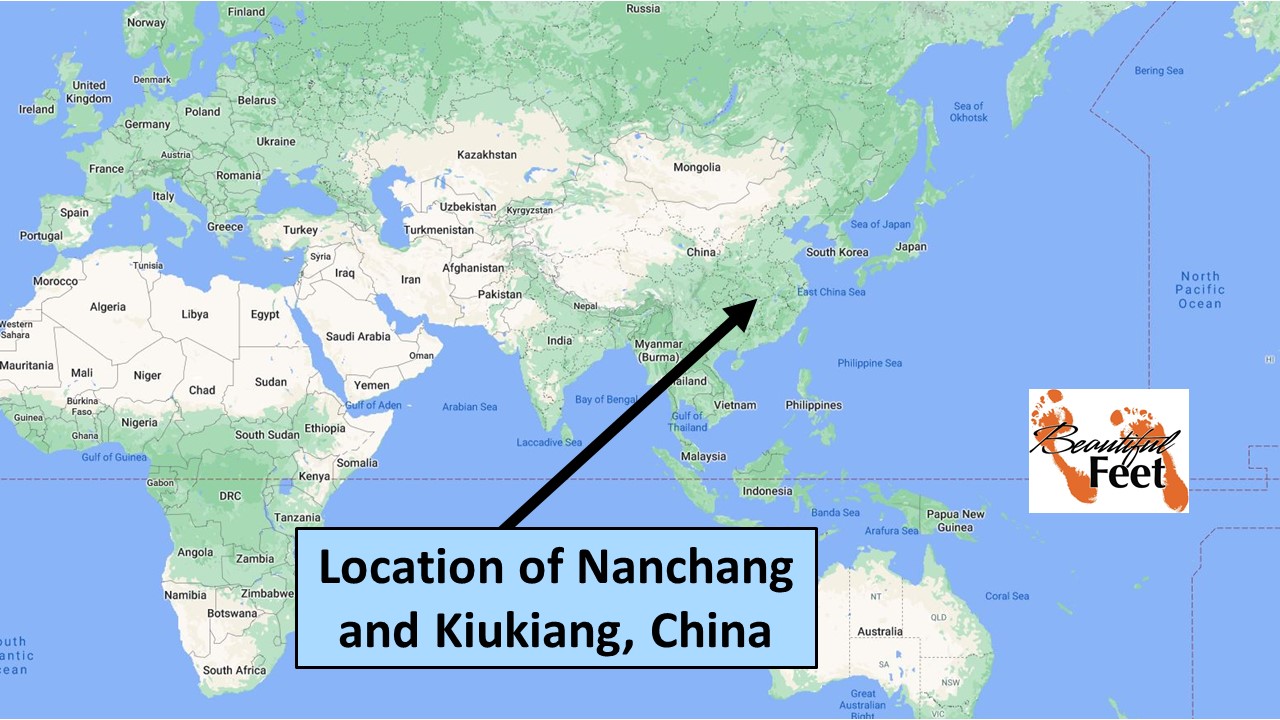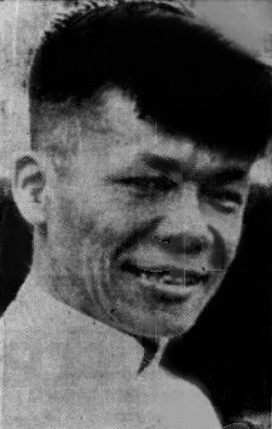1931 Nanchang, China (2 revivals)

Introduction
During the midst of the 1927-1939 Chinese Awakening, a revival took place in Nanchang and Kiukiang, China. We encourage the reading of the 1927-1939 Chinese Awakening as a lead-in to this revival account.

Extraordinary Prayer
It was in the latter part of 1930 that the Methodist Episcopal missionary William E. Schubert and a Chinese colleague had prayed a whole month for revival in their Nanchang church, but with no apparent results. With desperation, they started again on January 1, 1931, and prayed for 50 days, pleading with God for revival in their dead church.
Hearing of the ministry of John Sung, Schubert sent a letter to him, requesting him to conduct revival meetings at their church in Nanchang.
When Sung received the invitation, he knew it was God’s will for him to go and that the services to be conducted would be a turning point in his ministry.
In the middle of February, Sung arrived in Nanchang, a city and region in which revival meetings were relatively unknown. During the first week, only 80-90 people were present, and there were no exceptional results from the preaching. During the second week Sung ministered to the students in the high schools, but again with no noticeable results.
This led to Sung’s self-examination, and on March 5, 1931, after he entered his bedroom for the night, he heard William Schubert pleading with God in prayer:
Lord, let me see revival in Nanchang or let me go home to America!
Hearing of the missionary’s desperation, Sung also got out of bed, knelt on the floor and prayed:
Lord, what about me? Do I really want to see revival? Oh, reveal thy power! Use us! We are looking to thee!
In response to prayer, Sung received from the Lord direction for his sermons, which was to be repentance. He felt directed to focus on the strongholds of sin before he would be able to see a victory come to the Church.
What Happened
Another week of meetings commenced in Nanchang, and immediately there were signs of the Holy Spirit at work, with conviction power coming upon the people as a result of Sung’s sermons.
The leaders decided to call in all the Chinese church workers and evangelists from the area for special meetings. While waiting for the date of the next scheduled meetings, Sung went to the Methodist church in the city of Kiukiang.
Kiukiang seemed more fertile for Sung’s ministry, and almost all the students from the Methodist High School—about 200 of them—turned to the Lord. Sung subsequently organized evangelistic teams and sent them out preaching during their spare time. That was a practice Sung and other Chinese evangelists had in all their evangelistic ministries.

Extraordinary Prayer Demanded
When Sung returned to Nanchang for the specially called meetings, he insisted that all the missionaries, as well as church and school workers, participate in focused prayer gatherings.
Services for the High School
Prior to the specially called meetings, there was a week that was used to focus on ministry to the high school students and the school staff. Sung focused his sermons on sin every night. With no mercy, he exposed the sins of Christians and non-Christians alike.
The Holy Spirit’s power was present, and young and old were completely broken down under the weight of their sin. There were many that were weeping and sobbing loudly—children and teachers alike. Around 180 confessed their sins and were added to the church.
► The children confessed their sins to God and to one another
► The principal of the school and the teaching staff confessed their faults to one another.
► Sin was dealt with.
► Restitution was made where required and many were freed from terrible bondages.

John Sung
Services for Chinese Evangelists and Church Workers
The second week was for the Chinese evangelists and other workers throughout the region. Sung’s sermons focused on the need to present to the Lord a clean vessel from which He can work.
Present during these services were the 200 high school students, who were openly praying for their parents and the Christian workers to have pure hearts. This was offensive to many adults and Sung was accused of stirring up the children against their parents.
Evangelism Training
When the high school had a term break, Sung took many of the students to a nearby mountain resort for evangelism training, then formed them into teams to go out preaching. As the excitement built, the previously offended parents and evangelists joined with the young people, until finally there were over 200 teams traveling about preaching the Gospel.
Through the sharing of the Gospel, many came under conviction of their sins and began to cry out to God for forgiveness.
Back in Kiukiang
When the people in Kiukiang heard about the revival in Nanchang, they insisted that John Sung return so they could share in the blessing that was being experienced in Nanchang.
Key to the Revival
This revival was experienced through several keys:
1. The faithful prayers of God’s people
2. The fearless preaching against sin
3. The need for a thorough confession of sin
4. The need for the baptism of the Holy Spirit for all workers
5. The need to witness for Jesus publicly
One of the missionaries present during the revival in the summer of 1931 wrote:
We are having a Bible revival in Nanchang and Kiukiang… Dr. Sung can take any Bible passage you suggest and make it live as I have heard almost no other man do. He still spends hours daily with the book, and that is the secret of his success.
As the testimonies from the converts of Nanchang began to find their way into Christian periodicals, Sung’s reputation spread, giving him more open doors throughout China and many other Asian nations.
See how Sung’s ministry spread to other nations by reading about the 1927-1939 Chinese Awakening.
China Today
According to Operation World, China’s Christian population is around 105 million.
Sources
► A Biography of John Sung by Leslie T. Lyall
► Evangelical Awakenings in the South Seas by J. Edwin Orr
► I Remember John Sung by William E. Schubert
► John Sung by Leslie T. Lyall
► John Sung by Wikipedia
► John Song: Modern Chinese Christianity and the Making of a New Man by Daryl R. Ireland
► John Sung My Teacher by Timothy Tow
Return to List of Revival Stories
Chet & Phyllis Swearingen:
Office: (260) 920-8248
romans1015@outlook.com
Beautiful Feet
P.O. Box 915
Auburn, IN 46706

